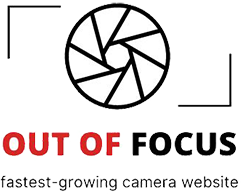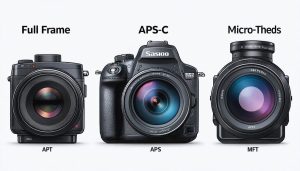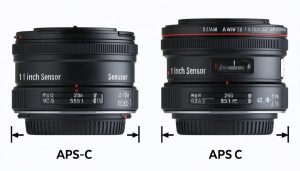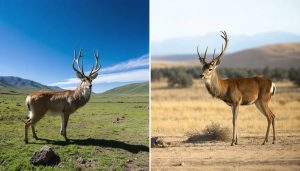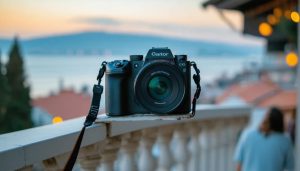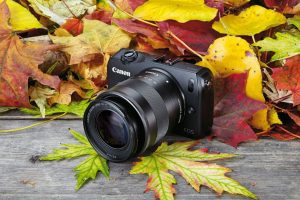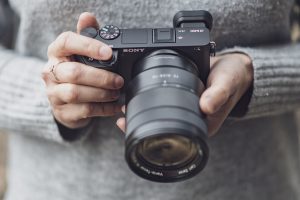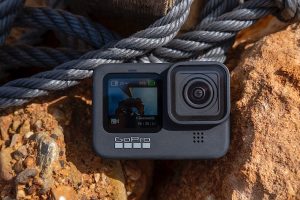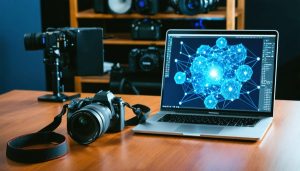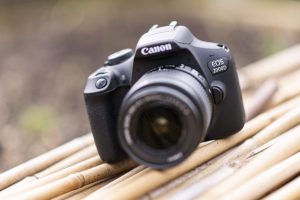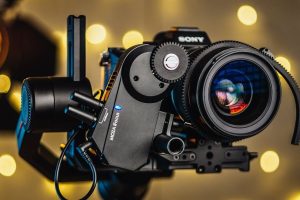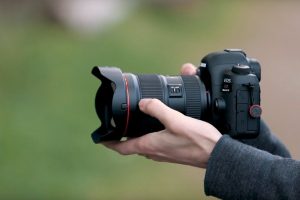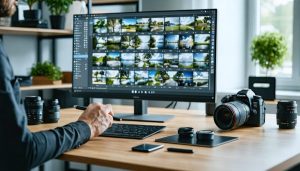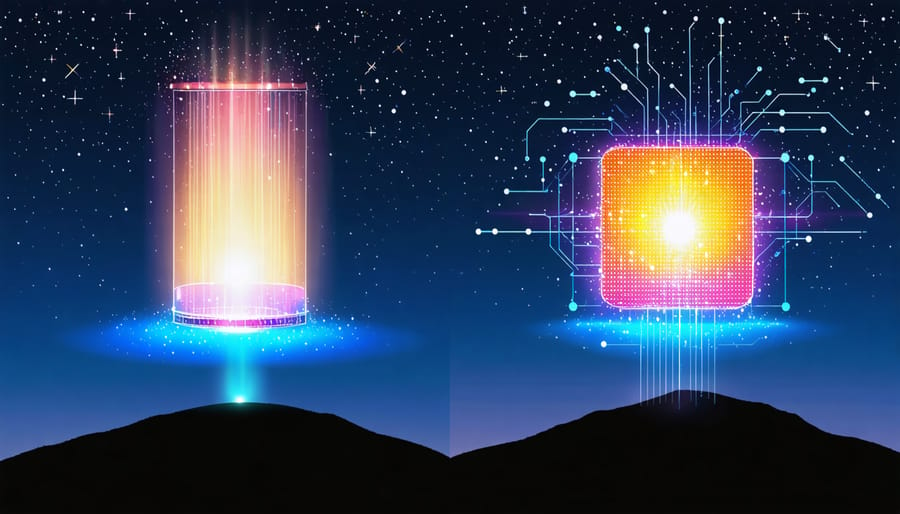
Light sensor sensitivity fundamentally shapes how your camera captures detail in challenging conditions. Understanding your camera sensor sizes and their inherent sensitivity characteristics empowers you to push boundaries in low-light photography and master dynamic range control.
Modern image sensors transform light into precise digital information through millions of photosites, each contributing to your final image’s clarity and detail. When these photosites receive more light, they generate stronger electrical signals, resulting in cleaner images with less noise. Conversely, in dim conditions, smaller sensors struggle to maintain image quality, often introducing unwanted grain and color distortion.
This delicate balance between sensor size, light sensitivity, and image quality drives many of photography’s most critical technical decisions. Whether you’re capturing star-filled night skies or dimly lit indoor events, your sensor’s ability to handle available light directly impacts your creative possibilities. By mastering these fundamentals, you’ll make more informed choices about exposure settings, equipment selection, and shooting techniques.
The Basic Physics of Light Capture
Photons and Pixels: The Foundation
At the heart of digital photography lies a fascinating interaction between light and technology. When light hits your camera’s sensor, individual photons – tiny particles of light – strike microscopic pixels arranged in a precise grid. Think of each pixel as a tiny bucket collecting raindrops of light. The more photons that fall into these “buckets,” the stronger the electrical signal generated.
Each pixel contains photodiodes that convert these light particles into electrical charges. The sensor then measures these charges and translates them into digital values, creating the building blocks of your digital image. The sensitivity of these photodiodes to light determines how effectively your camera can capture images in various lighting conditions.
What’s particularly interesting is that not every photon that hits the sensor gets converted into image data. Some bounce off, while others get absorbed by surrounding structures. Modern sensor designs incorporate micro-lenses above each pixel to help funnel more photons to the light-sensitive areas, improving the sensor’s overall efficiency.
This fundamental process is crucial because it directly affects your camera’s ability to capture detail, especially in challenging lighting situations.
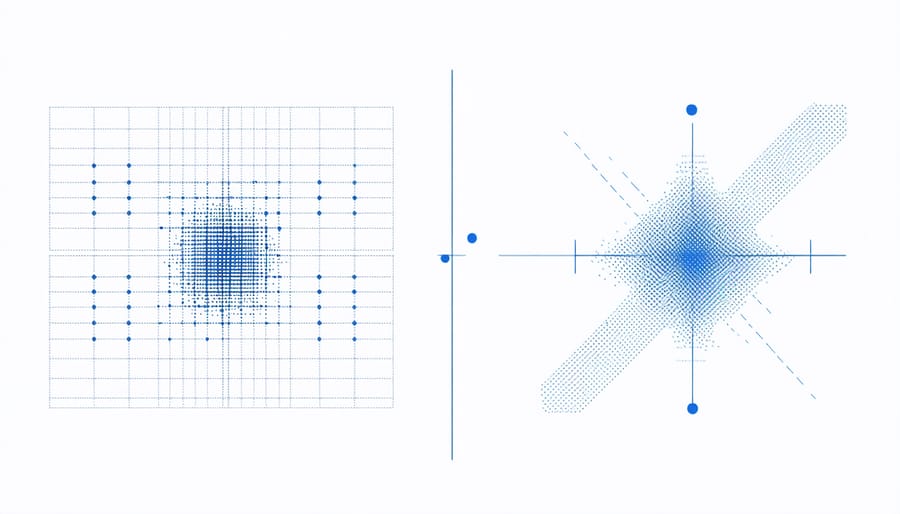
Signal-to-Noise Ratio Explained
Signal-to-Noise Ratio (SNR) is like a tug-of-war between the light information you want and the digital noise you don’t. Think of it as trying to hear someone speak in a crowded room – the speaker’s voice is your signal, while the background chatter is noise. In photography, a higher SNR means cleaner, more detailed images with better color accuracy.
When light hits your sensor, it’s converted into electrical signals. The stronger these signals are compared to the inherent electronic noise in your camera, the better your image quality will be. This is particularly important in low-light situations, where your sensor needs to work harder to capture enough light information.
Modern sensors typically perform best at their base ISO, where they capture the maximum amount of light information with minimal noise. As you increase ISO, you’re essentially amplifying both the signal and the noise, which is why high-ISO images can look grainy or noisy.
To maximize your SNR, try to shoot at your camera’s base ISO whenever possible, use proper exposure techniques, and consider using a tripod in low-light situations rather than immediately bumping up your ISO.
Size Matters: The Advantage of Larger Sensors
Pixel Size and Light Gathering
When it comes to light sensitivity, pixel size plays a crucial role in determining how well your camera performs, especially in challenging lighting conditions. Think of pixels as tiny buckets collecting light – the larger the bucket, the more light it can gather. This is why sensor size matters more than megapixels when it comes to image quality.
Larger pixels offer two significant advantages. First, they capture more photons (light particles), resulting in stronger signal generation. This means better light sensitivity and improved performance in low-light situations. Second, larger pixels provide better signal-to-noise ratio, producing cleaner images with less digital noise.
To put this in perspective, imagine two sensors with the same physical dimensions. One has 12 megapixels, while the other has 48 megapixels. The 12MP sensor will have larger individual pixels, allowing each one to collect more light. This is why many professional cameras designed for low-light photography often feature “modest” megapixel counts with larger pixel sizes.
This principle explains why smartphones, despite having high megapixel counts, typically struggle in low light compared to larger-sensor cameras. Their physically smaller sensors mean smaller pixels, which can’t gather as much light individually, resulting in noisier images in challenging conditions.
Total Surface Area Impact
When it comes to light sensitivity, size truly matters. Think of your camera’s sensor as a bucket collecting raindrops of light – the larger the bucket, the more light it can collect in a given time. This fundamental principle explains why full-frame sensors generally perform better in low-light situations than their smaller counterparts.
A larger sensor surface area means more photosites (light-capturing elements) can be packed onto the sensor while maintaining a comfortable size for each individual photosite. These larger photosites are more efficient at collecting light and producing cleaner images with less digital noise, especially in challenging lighting conditions.
To put this into perspective, a full-frame sensor has roughly 2.5 times the surface area of an APS-C sensor. This difference becomes particularly noticeable when shooting in dimly lit environments like concert venues or during sunset. The larger sensor can gather more light information, resulting in better dynamic range and improved low-light performance.
However, it’s worth noting that modern technological advances have somewhat leveled the playing field. Today’s crop sensors can deliver impressive results thanks to improved processing algorithms and more efficient photosite designs. For instance, a current-generation APS-C sensor might outperform an older full-frame sensor despite its smaller size.
For practical applications, this means that while larger sensors generally offer better light sensitivity, you shouldn’t feel limited by a smaller sensor. Understanding your equipment’s capabilities and limitations will help you make informed decisions about your shooting conditions and camera settings, ultimately leading to better photographs regardless of your sensor size.
Real-World Performance Differences
Smartphone vs. Full-Frame
When comparing smartphone cameras to full-frame sensors, the difference in low-light performance can be striking. This disparity primarily stems from the physical size of the sensors, which is one of the key distinctions among different sensor formats. While smartphone manufacturers have made impressive strides in computational photography, they still face fundamental limitations due to physics.
A typical smartphone sensor might measure around 1/2.55 inches, while a full-frame sensor is roughly 36x24mm – approximately 30 times larger. This size difference has profound implications for light gathering capability. Larger sensors can accommodate bigger individual photosites (pixels), which collect more light and produce cleaner images with less noise in low-light conditions.
Think of it like collecting rainwater: A large bucket (full-frame sensor) will collect more water than a thimble (smartphone sensor) in the same amount of time. Similarly, larger sensors capture more light photons, resulting in better signal-to-noise ratios and improved dynamic range.
Modern smartphones compensate for their smaller sensors through sophisticated algorithms and multi-frame capture techniques. Night modes, for instance, combine multiple exposures to create a brighter, cleaner image. However, these computational methods, while impressive, can’t fully overcome the physical advantages of larger sensors.
Where this difference becomes most apparent is in challenging lighting conditions. A full-frame camera might comfortably shoot at ISO 6400 with acceptable noise levels, while a smartphone pushed to equivalent brightness levels would show significant image degradation. This is why professional photographers still rely on larger sensors for critical low-light work, despite the convenience of smartphone cameras.
That said, smartphones continue to narrow the gap through innovative technology, making them increasingly capable tools for casual and even serious photography in good lighting conditions. The key is understanding these limitations and choosing the right tool for your specific photographic needs.
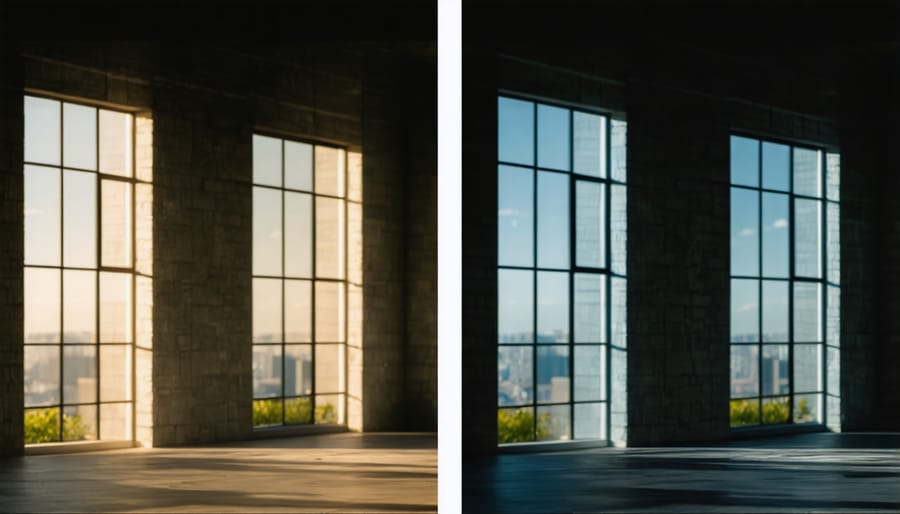
ISO Performance Variations
When it comes to ISO performance, sensor size plays a crucial role in determining how well your camera handles high-sensitivity settings. Larger sensors, like those found in full-frame cameras, generally perform better at higher ISOs compared to their smaller counterparts. This is because larger sensors have bigger individual photosites (pixels) that can capture more light, resulting in better signal-to-noise ratios and cleaner images.
Think of it like collecting raindrops in buckets of different sizes. A larger bucket (sensor) can collect more raindrops (light) with less spillover, while a smaller bucket might struggle to capture the same amount efficiently. This physical advantage translates directly to better high-ISO performance and enhanced dynamic range capabilities.
For example, a full-frame sensor might produce perfectly usable images at ISO 6400, while a smaller sensor might start showing significant noise at ISO 3200. This difference becomes particularly noticeable in challenging lighting conditions, such as indoor events or twilight photography.
However, it’s important to note that sensor technology has advanced significantly in recent years. Modern crop-sensor cameras often outperform older full-frame models in terms of noise handling and sensitivity. Manufacturers have made impressive strides in sensor design, on-chip noise reduction, and processing algorithms.
When choosing a camera, consider your typical shooting scenarios. If you frequently shoot in low-light conditions or need maximum image quality at higher ISOs, a larger sensor might be worth the investment. But don’t feel limited by a smaller sensor – with proper technique and understanding of your equipment’s capabilities, you can still achieve excellent results across a wide range of ISO settings.
Remember that noise performance isn’t just about sensor size – factors like the camera’s processing engine, sensor generation, and overall design philosophy all contribute to how well it handles high ISO settings.
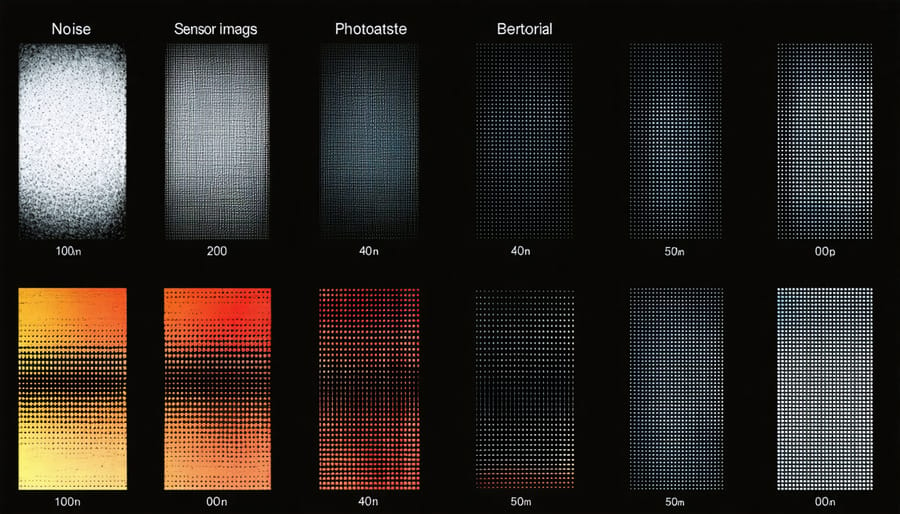
Making the Most of Your Camera’s Sensor
Exposure Techniques for Low Light
In low-light situations, understanding how to optimize your camera settings based on your sensor size can make the difference between a grainy mess and a clean, professional image. Larger sensors generally perform better in low light, but regardless of your sensor size, there are proven techniques to maximize your results.
For full-frame sensors, start by pushing your ISO higher than you might think – modern sensors can often handle ISO 3200-6400 with minimal noise. Keep your aperture wide open, but remember that how your lens quality affects sensor performance becomes even more crucial in challenging light.
With crop sensors (APS-C or Micro Four Thirds), stay within more conservative ISO ranges – typically 1600-3200 for optimal results. Compensate by using slower shutter speeds with stabilization when possible. Consider using burst mode and taking multiple shots to ensure at least one sharp image.
Regardless of sensor size, these universal tips help:
– Use RAW format for maximum editing flexibility
– Enable in-body stabilization if available
– Consider using a tripod for exposures longer than 1/60th
– Focus on bright areas or use manual focus if autofocus struggles
– Expose slightly to the right without blowing highlights
Remember, while larger sensors provide more flexibility in low light, proper technique often matters more than sensor size alone.
Post-Processing Considerations
Even the most sensitive light sensors can produce noise in challenging conditions, but modern post-processing techniques offer powerful solutions. Start by shooting in RAW format to preserve maximum data for editing flexibility. When reducing noise in your editing software, focus first on the luminance noise (brightness variations) before tackling color noise, as this approach typically yields more natural-looking results.
Pay special attention to shadow areas where noise is most prominent. Rather than applying aggressive noise reduction across the entire image, use selective adjustments to target specific areas while preserving detail in well-exposed regions. Sometimes, converting a noisy high-ISO image to black and white can transform distracting color noise into appealing grain-like texture.
For exposure adjustments, remember that pushing exposure too far in post-processing can amplify existing noise. It’s generally better to slightly overexpose when shooting (without clipping highlights) than to dramatically boost exposure in editing. Consider using exposure blending techniques for high-contrast scenes, combining multiple shots to maximize your sensor’s capabilities while maintaining clean, noise-free images.
Understanding light sensor sensitivity is crucial for achieving optimal image quality in your photography journey. Throughout this article, we’ve explored how sensor size and sensitivity work together to capture light, the relationship between ISO settings and image noise, and practical techniques for maximizing your camera’s potential in various lighting conditions.
Remember that while higher ISO capabilities can be beneficial, they’re just one tool in your photographic arsenal. The key is finding the right balance between sensor sensitivity, aperture, and shutter speed for your specific shooting situation. When possible, stick to your camera’s native ISO range for the best image quality, and consider using a tripod or external lighting before pushing your ISO to extreme levels.
For everyday photography, modern sensors provide excellent performance across a wide range of lighting conditions. However, if you frequently shoot in challenging light situations, consider investing in a camera with a larger sensor or better low-light capabilities. Don’t forget that proper exposure techniques and understanding your equipment’s limitations are just as important as the technical specifications.
Whether you’re capturing night landscapes, indoor events, or street photography, apply these insights to make informed decisions about your camera settings. With practice and the knowledge you’ve gained, you’ll be better equipped to handle any lighting challenge while maintaining the image quality you desire.
